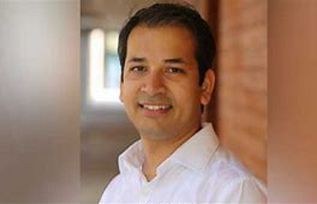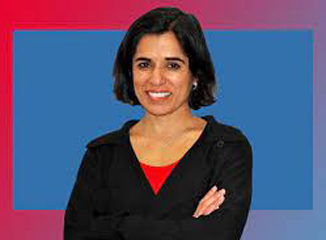
HOUSTON (TIP): Trailblazing Indian American computer engineer Ashok Veeraraghavan has won the 2024 Edith and Peter O’Donnell Award in Engineering for his revolutionary imaging technology that seeks to make the invisible visible. Veeraraghavan, Professor of Electrical and Computer Engineering and Computer Science, George R. Brown School of Engineering at Rice University, was bestowed with the award by The Texas Academy of Medicine, Engineering, Science, and Technology (TAMEST).
Imagine taking a pristine picture through fog, smoke and rain. Imagine taking interior images of the human body through skin, bone and other tissue that scatter light and limit human vision, says a media release about Veeraraghavan’s revolutionary technology.
Veeraraghavan and his team at Rice work on creating imaging systems that use novel multi-dimensional image sensors along with machine learning algorithms to undo the effects of light-scattering and see-through scattering media such as fog, smoke, rain and human tissue.
Recently, with support from researchers at the University of Maryland, his team has developed a new technology dubbed NeuWS, an acronym for “neural wavefront shaping.”
At its core, NeuWS is about undoing the effects of light scattering by using wavefront shaping and a novel machine-learning algorithm. Scattering is what makes light, which has a lower wavelength unusable in many scenarios. If you can undo the effects of scattering, imaging can go much further.
Capturing images through rain and fog is certainly interesting, but this technology could have lifesaving applications, the release stated.
Through NeuWS-like technologies, there could be a time in the future where a firefighter entering into a room filled with smoke could be equipped with goggles that allow them to have clear visibility.
Automakers could be able to install car headlights that can see through a host of dangerous weather conditions. Surgeons could be able to see blood vessels through the skin tissue without making a single cut.
While several further advances are needed to make any of these scenarios possible, their work has made significant progress and make all of this potentially feasible.
“Dr. Veeraraghavan is tackling one of the hardest problems in imaging, what many consider to be a ‘holy grail problem’ of optical engineering,” said nominator Alan Bovik, PhD (NAE), Professor, Cockrell Family Regents Endowed Chair in Engineering at The University of Texas at Austin.
“Every time we improve our ability to see what is unseen, the number of things we can do increases. The NeuWS technology is going to allow us to see things we cannot even imagine today.”
Born in Chennai, Veeraraghavan earned a BTech in electrical engineering from Indian Institute of Technology, Madras in 2002.
He also earned master’s and doctoral degrees from the Department of Electrical in 2004 and Computer Engineering at the University of Maryland, College Park 2004 in 2008.
After joining the ECE Department in 2010, he was promoted to Associate Professor in 2017 and professor in 2020. He co-developed FlatCam, a small sensor chip with a mask that substitutes lenses in typical cameras.
Veeraraghavan is one of five Texas-based researchers receiving the TAMEST 2024 Edith and Peter O’Donnell Awards. Each is chosen for their individual contributions addressing the essential role that science and technology play in society, and whose work meets the highest standards of exemplary professional performance, creativity and resourcefulness.
The Edith and Peter O’Donnell Awards annually recognize rising star Texas researchers who are addressing the essential role that science and technology play in society, and whose work meets the highest standards of exemplary professional performance, creativity and resourcefulness.
Founded in 2004 TAMEST is composed of the Texas-based members of the three National Academies (National Academy of Medicine, National Academy of Engineering and National Academy of Sciences), the Royal Society and the state’s eight Nobel Laureates.





Be the first to comment